Amazing and Wobbly Jell-O Art
-
Courtesy Sam Bompas and Harry Parr.
Take a look through creations by Bompas and Parr and other gelatin geniuses.
St. Paul's Cathedral
London-based artists Sam Bompas and Harry Parr have been pushing the limits of what can be done with jellies (the British term for anything set with gelatin) over the past few years. St. Paul’s Cathedral is one of the architectural creations featured in their new book Jellymongers, just out in the U.S.
-
Photograph by Chris Terry, courtesy Sam Bompas and Harry Parr.
Taj Mahal
At first, Bompas and Parr used Ikea containers as molds. When they wanted to create more elaborate shapes, they learned to create their own molds using architectural design programs.
-
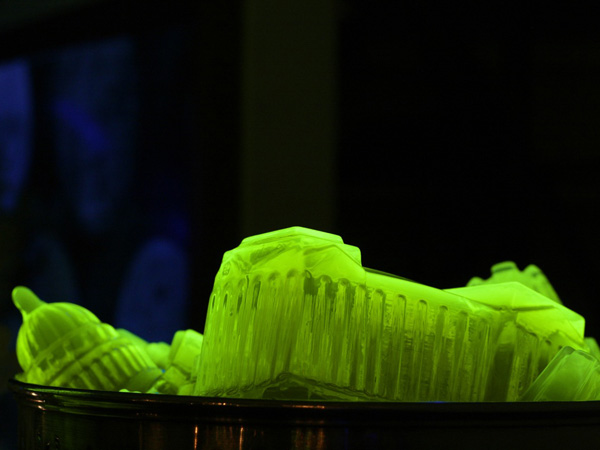 Photograph by Ann Charlott Ommedal, courtesy Sam Bompas and Harry Parr.
Photograph by Ann Charlott Ommedal, courtesy Sam Bompas and Harry Parr.Neon Jelly Chamber, London, March 2011
This neon jelly creation was made using the secret ingredient used to dye the Chicago River green each year. The installation was inspired by Antonin Careme, known as the "king of chefs and chef to kings," who cooked for Napoleon, George IV, and Tsar Alexander, often molding food into architectural shapes.
-
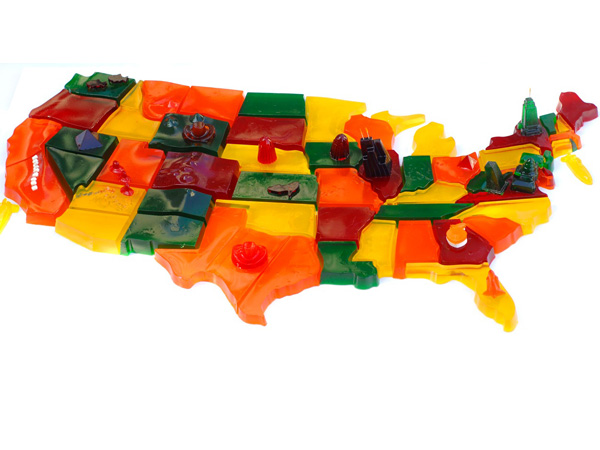 Courtesy Sam Bompas and Harry Parr.
Courtesy Sam Bompas and Harry Parr.Map of America
This map was more than 6 feet across. Details like the hat and iconic buildings rise several inches off the base.
-
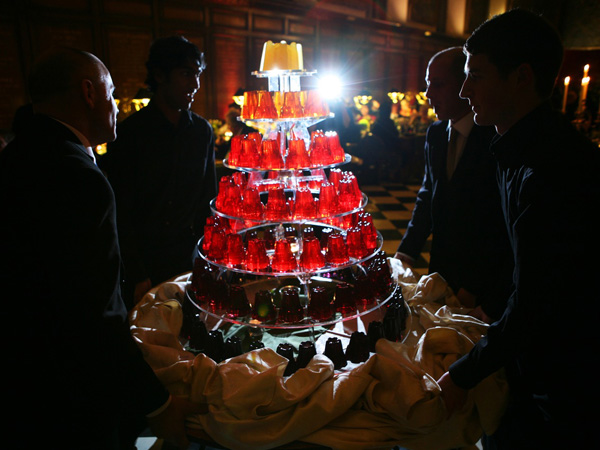 Courtesy Sam Bompas and Harry Parr.
Courtesy Sam Bompas and Harry Parr.Wedding Jelly, November 2008
“Brides keen to avoid stodgy wedding cake can order a huge wobbly tower of jelly,” Bompas and Parr suggest on their website. “Wedding jellies are lighter and more refreshing than cakes. They are kinder to the stomach after a heavy meal so make it less likely for guests to fall asleep during the speeches.”
-
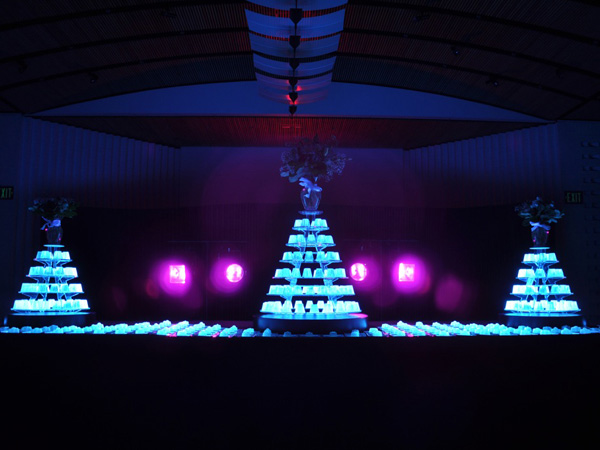 Photograph by Charles Villyard/SFMOMA.
Photograph by Charles Villyard/SFMOMA.Funeral Jelly Installation, SFMOMA, September 2009
As part of the Sensate: Bodies and Design exhibition at the San Francisco Museum of Modern Art, Bompas and Parr created a glow in the dark funeral jelly installation. Guests were served glowing sherry jellies designed with motifs found at the San Francisco Columbarium, a vault filled with urns containing ashes of the dead. A jelly funeral march accompanied the jellies.
-
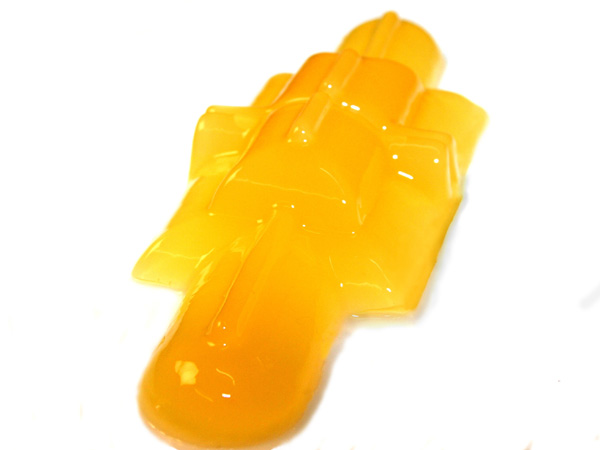 Courtesy Sam Bompas and Harry Parr.
Courtesy Sam Bompas and Harry Parr.The Orangelly, Bompas and Parr Architectural Jelly Contest
In 2008, Bompas and Parr held a competition for architects to design jelly buildings. They received more than 100 entries and hosted a banquet for 2,000 attendees, displaying submissions on a table that made them shake. (Wobbliness was a judging criterion.) Here, the Orangelly by architect Iain McCaig.
-
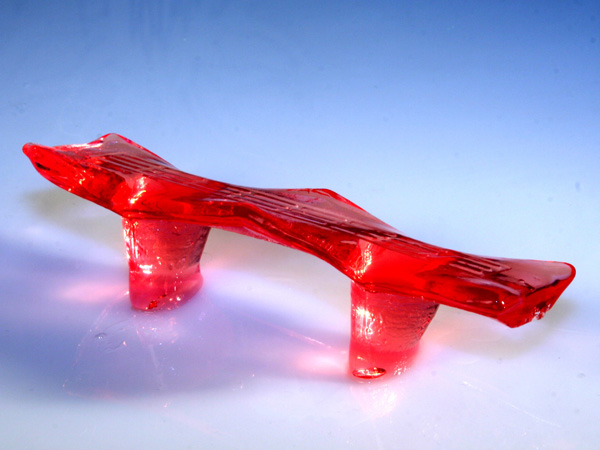 Courtesy Sam Bompas and Harry Parr.
Courtesy Sam Bompas and Harry Parr.Wobbly Bridge by Foster + Partners
Norman Foster submitted this take on London’s Millennium Bridge to the competition.
-
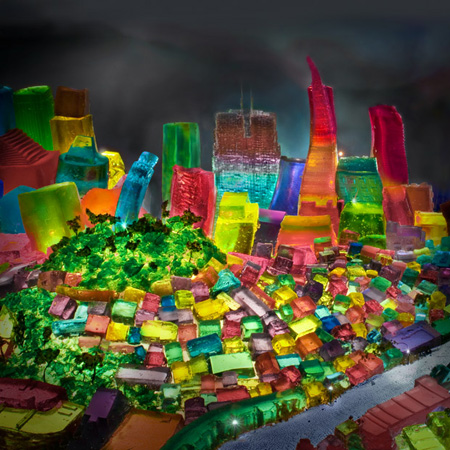 Courtesy Liz Hickok.
Courtesy Liz Hickok.San Francisco in Gelatin
Liz Hickok is another artist who works with gelatin. Treating her work like a movie set, she adds backdrops and elements such as mountains or trees before dramatically lighting the scenes.
-
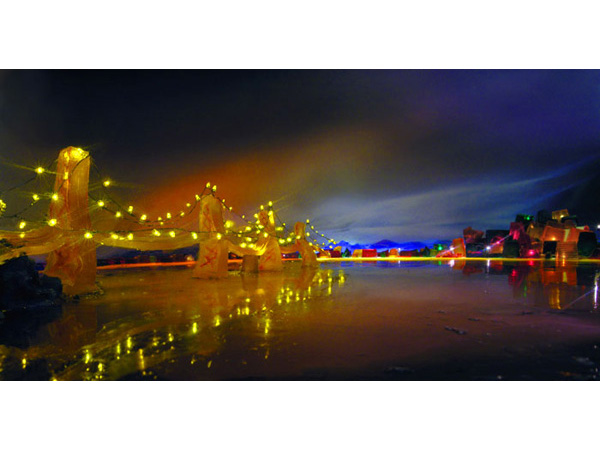 Courtesy Liz Hickok.
Courtesy Liz Hickok.Bay Bridge in Jell-O
“The Jell-O sculptures quickly decay, leaving the photographs and video as the remains,” Hickok explains on her website, where she sells prints of the creations.
-
Photograph courtesy of The Way We See the World via Flickr.
Gelowry
Since 2009, the Gowanus Studio Space in Brooklyn, New York, has been hosting an annual Jell-O mold competition and gelatin art workshops. Here Alix Bazelais’ “wearable, edible jewelry that leaves a trace long after it’s gone” is made from a 3-D printed plastic necklace with orange, grape, and cherry cut-outs created by hand.
-
Courtesy Jell-O Mold Competition.
Jell-O Cocktail Trumpery
This was the grand prize winner at the 2009 Jell-O Mold competition, created by Kandice Levero and Julia Greene.
-
Courtesy Jell-O Mold Competition.
Jell-O Dress
Meredith Zuchman contributed something wearable to the Gowanus competition. This “dress made of Jell-O can be eaten like an artichoke by peeling the layers off” and consists of strawberry and raspberry Jell-O lined with sheer fabric.
-
Courtesy Jell-O Mold Competition.
Gel(lo) Caps
Alexis Liu created this for the same competition with plastic Popsicle tubes.
-
Courtesy Jell-O Mold Competition.
The Tiffany Dragon Jell-O Lamp
This was the 2010 people’s choice winner in the same competition. Artists Julia Greene, Melissa Zook, and Kenzan Tsutakawa-Chinn wrote: “Jell-O and glass have a lot in common in their ability to refract and play with light. We wanted to flaunt Jell-O's incredible capacity for luminescence.”